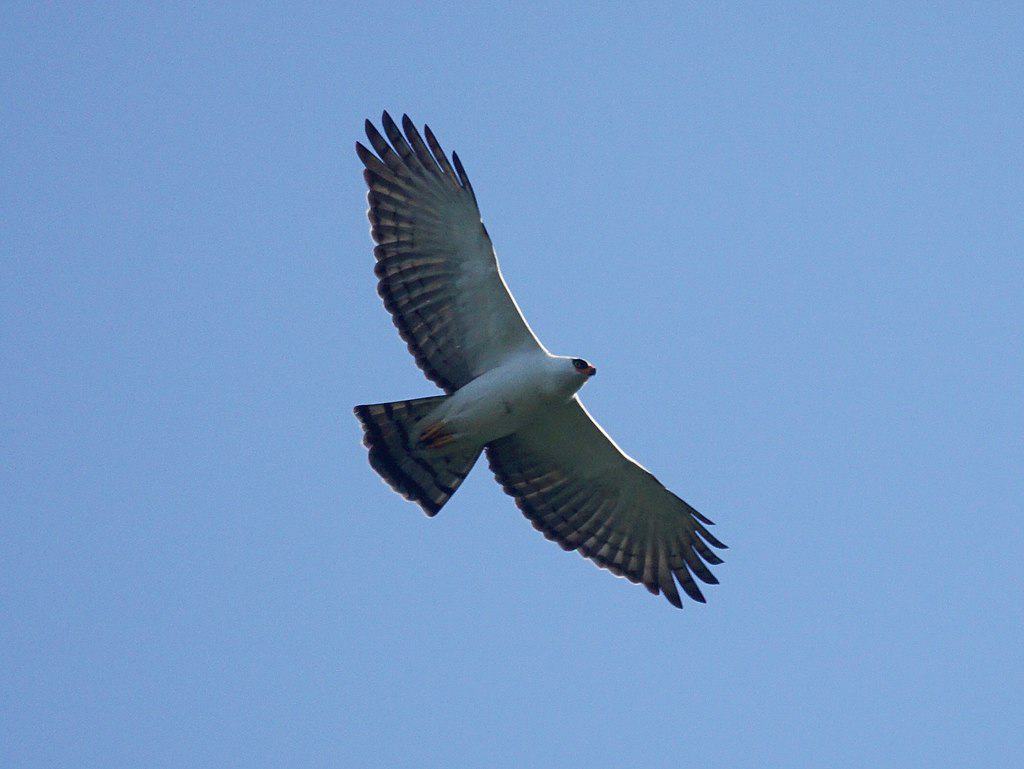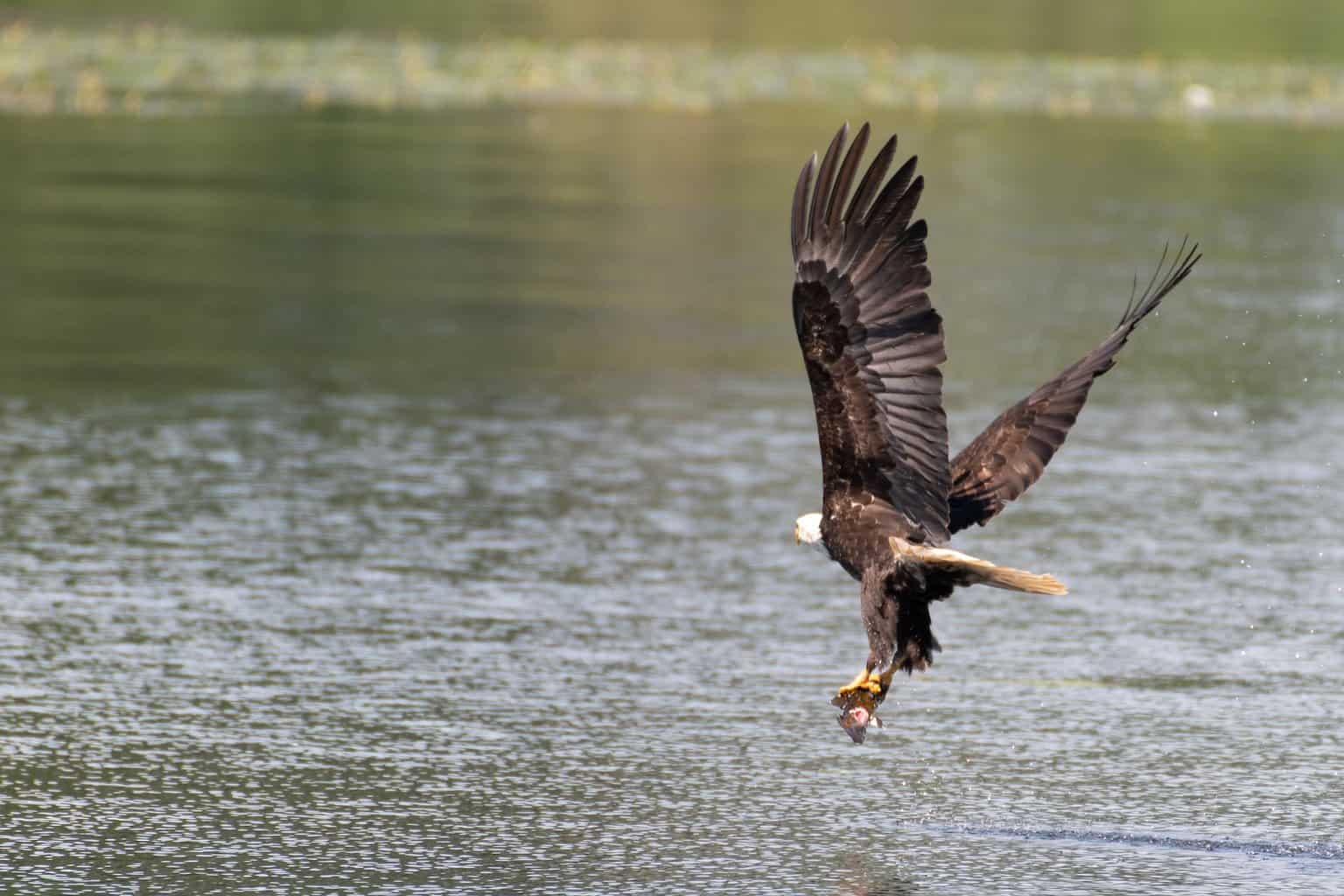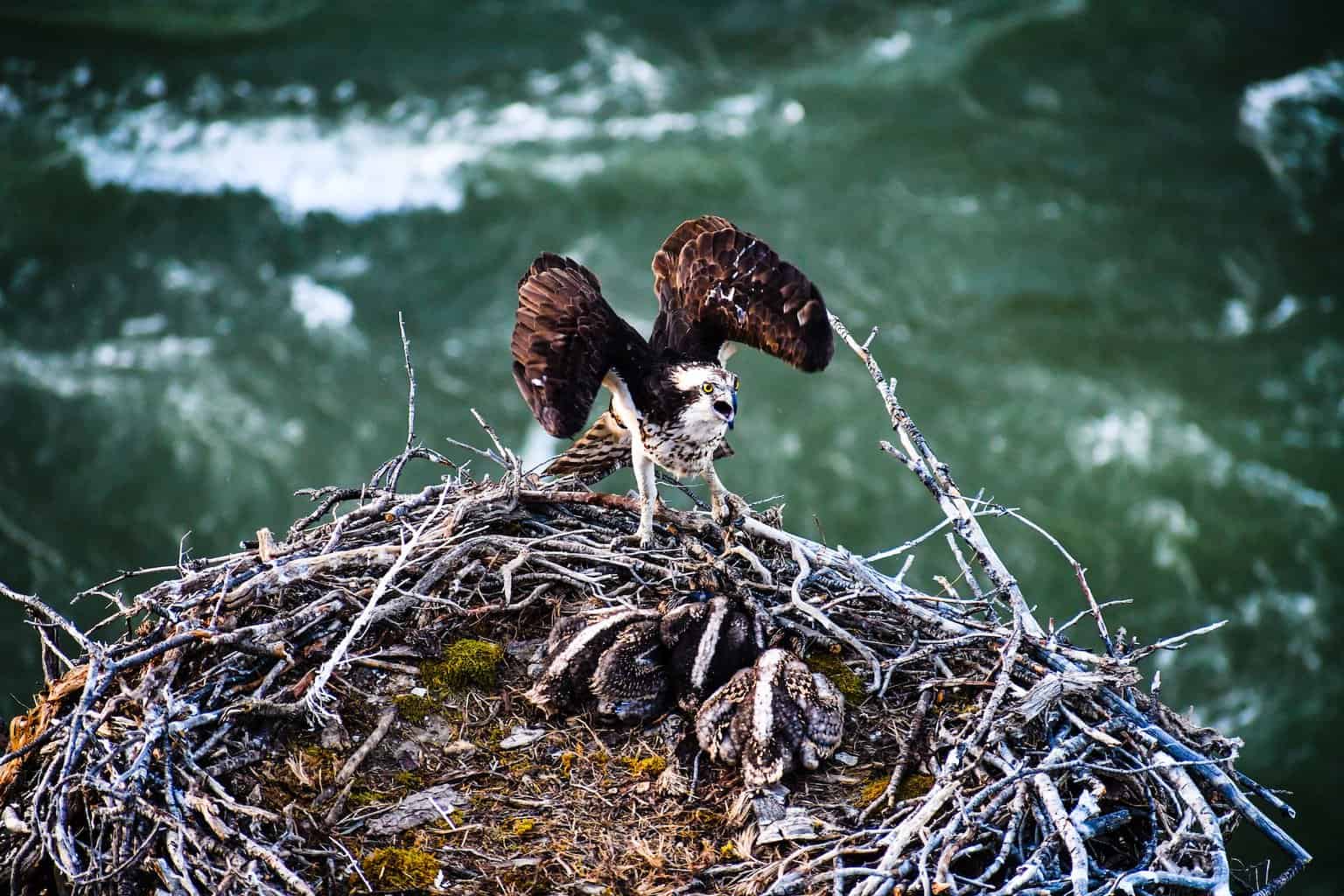- Best Amazon Bird Baths Guide - September 26, 2023
- Best Copper Bird Baths - August 30, 2023
- Best Bird Baths Available at Home Depot - August 26, 2023
Eagles. Just the word sends shivers down my spine. An eagle is the ultimate symbol of majesty: large and fierce, with a powerful beak, strong legs, and massive talons. The bald eagle is, after all, the national bird of the United States (and it turns out eagles are the symbols for several other countries too).
While they’re not something you’ll see in your backyard, you can spot eagles with some effort and a little knowledge about their habits. They’re also not a uniform slash-and-grab big boring predator; eagles show a surprising diversity of behaviors. This guide will help you learn about the eagles of the world and explore their ecology and biology.
Bottom Line Up Front
Eagles have one thing in common – they are top avian predators, and their eyes, beaks, and talons are all finely honed to kill living vertebrates, from snakes, fish, and birds, to mammals. You can find these large birds of prey on all continents except Antarctica and in all habitat types. The most speciose areas are Africa and Eurasia, where 56 of the 72 species occur.
Taxonomy
What is an eagle? They are not a single taxonomic group, as they are lumped with the hawks, kites, and buzzards; the term ‘eagle’ is informally applied to the largest birds of prey that hunt big vertebrates. Like most animals, as we develop new genetic methods, the taxonomy of eagles is being revised. Some subspecies have recently been elevated to species status, but others are still in review, and some genera likely contain species that are not close relatives, so expect taxonomic changes as new studies emerge.
There are 72 species of eagles in the world, divided into four groups.
- Kingdom: Animalia
- Phylum: Chordata
- Class: Aves
- Order: Accipitriformes
- Family: Accipitridae
Within the Family Accipitridae, you’ll find two subfamilies: the Circaetinae, which contain the snake eagles; and the Buteoninae, which contain the fish eagles, booted eagles, and harpy eagles, along with some non-eagles (buzzards, hawks, and harriers).
Snake or Serpent Eagles (Subfamily Circaetinae)
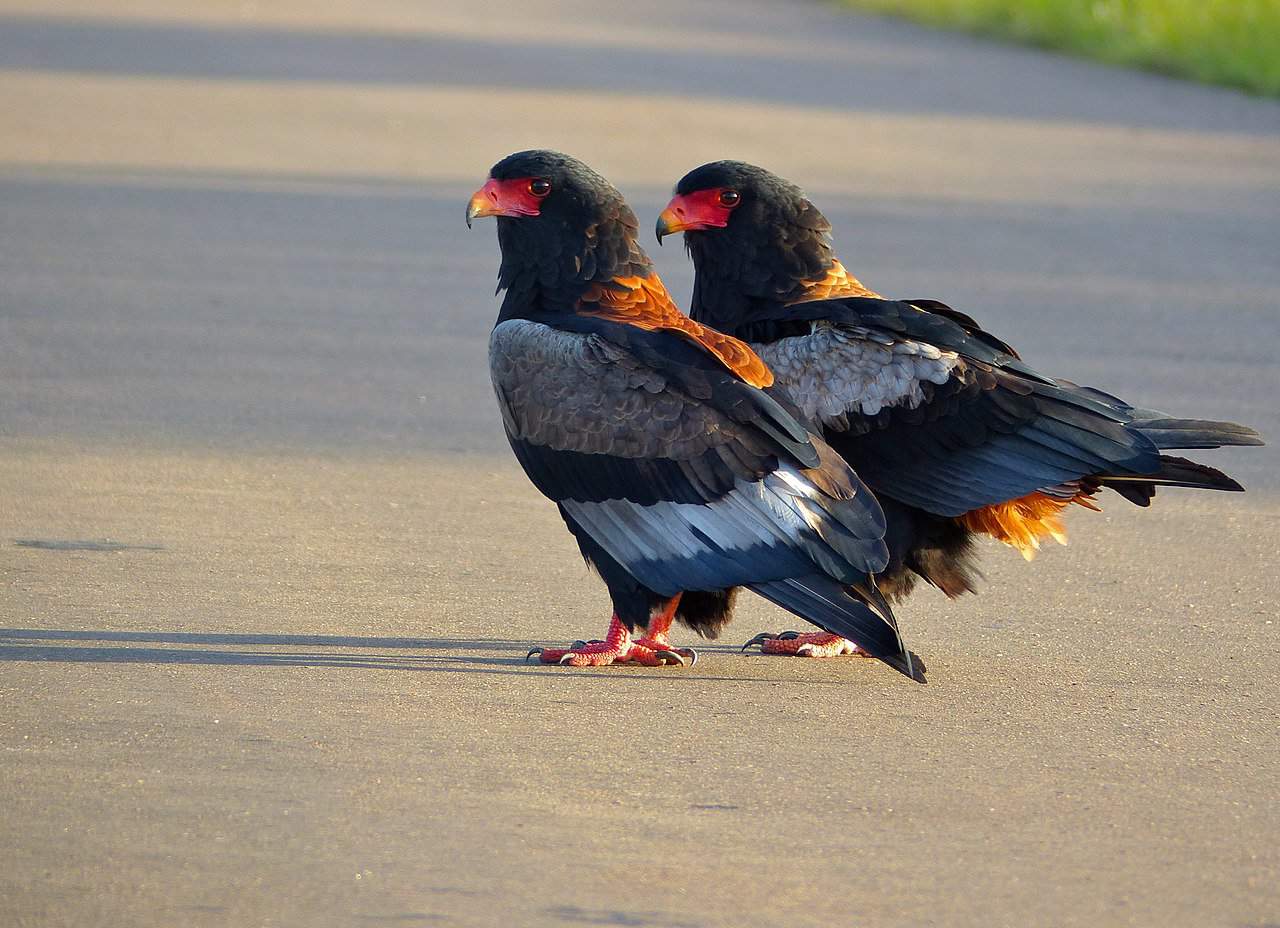
These eagles, as the name suggests, specialize on snakes. They are primarily found in Africa and India.
- Genus Terathopius
- Bateleur (T. ecaudatus) – Africa
- Genus Circaetus
- Short-toed snake eagle (C. gallicus) – Eurasia, Africa
- Beaudouin’s snake eagle (C. beaudouini) – Africa
- Black-chested snake eagle (C. pectoralis) – Africa
- Brown snake eagle (C. cinereus) – Africa
- Fasciated snake eagle (C. fasciolatus) – Africa
- Western banded snake eagle (C. cinerascens) – Africa
- Genus Dryotriorchis
- Congo serpent eagle (D. spectabilis) – Africa
- Genus Spilornis
- Crested serpent eagle (S. cheela) – India, Asia
- Central Nicobar serpent eagle (S. minimus) (subspecies or species) -India
- Great Nicobar serpent eagle (S. klossi) – India
- Mountain serpent eagle (S. kinabaluensis) – Malaysia
- Sulawesi serpent eagle (S. rufipectus) – Indonesia
- Philippine serpent eagle (S. holospilus) – Philippines
- Andaman serpent eagle (S. elgini) – India
- Crested serpent eagle (S. cheela) – India, Asia
- Genus Eutriorchis
- Madagascar serpent eagle (E. astur) – Madagascar
Harpy Eagles (Subfamily Buteoninae)
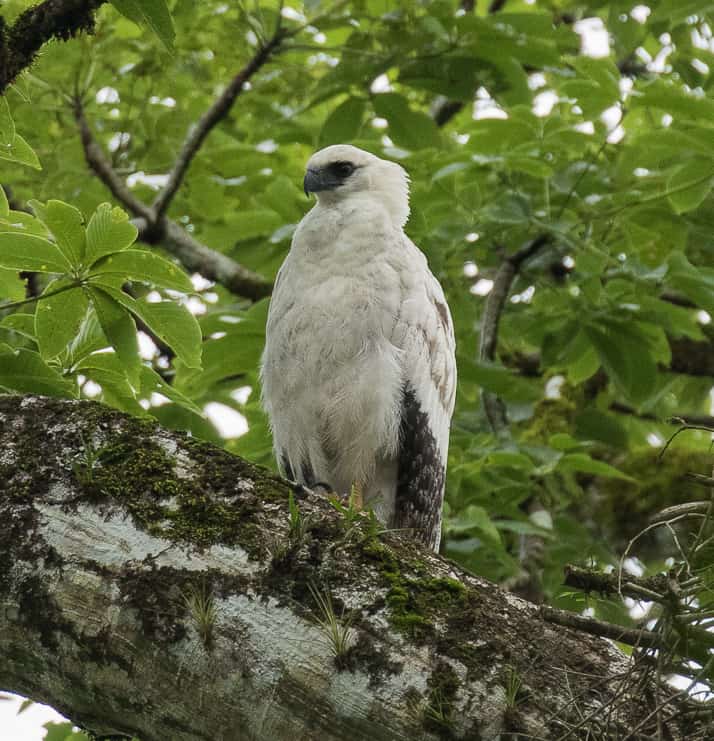
Otherwise known as “giant forest eagles,” these large eagles inhabit tropical forests.
- Genus Morphnus
- Crested eagle (M. guianensis) – Central and South America
- Genus Harpia
- Harpy eagle (H. harpyja) – Central and South America
- Genus Pithecophaga
- Philippine eagle (P. jefferyi) – Philippines
- Genus Harpyopsis
- Papuan eagle (H. novaeguineae) – New Guinea
- Genus Harpyhaliaetus
- Chaco eagle (H. coronatus) – South America
- Solitary eagle (H. solitarius) – South America
Fish Eagles (Subfamily Buteoninae)
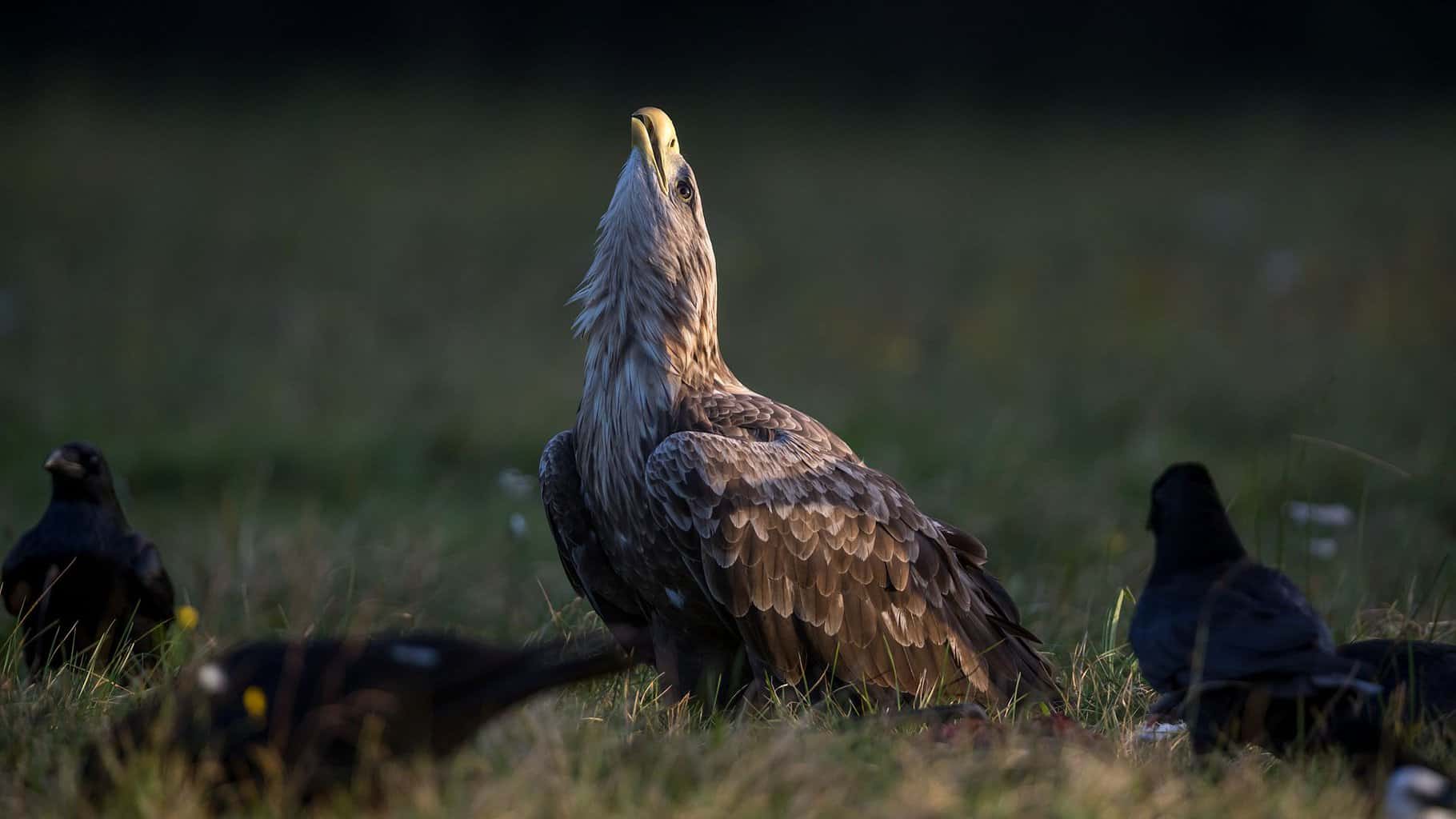
Sea or fish eagles eat fish as the main part of their diets. These may be one of the oldest living genera of birds, with a toe fragment found 33 million years ago thought to be from a species in this genus.
- Genus Haliaeetus
- White-tailed eagle (H. albicilla) – Eurasia
- Bald eagle (H. leucocephalus) – North America
- Steller’s sea eagle (H. pelagicus) – Asia
- African fish eagle (H. vocifer) – Africa
- White-bellied sea eagle (H. leucogaster) – Australia, New Guinea, Asia
- Sanford’s sea eagle (H. sanfordi) – Soloman Islands
- Madagascar fish eagle (H. vociferoides) – Madagascar
- Pallas’ sea eagle (H. leucoryphus) – Eurasia
- Genus Ichthyophaga (or Haeliaeetus)
- Lesser fish eagle (I. humilis) – India
- Grey-headed fish eagle (I. ichthyaetus) – Eurasia
- Genus Geranoaetus
- Black-chested buzzard-eagle (G. melanoleucus) – South America
Booted Eagles (Subfamily Buteoninae)
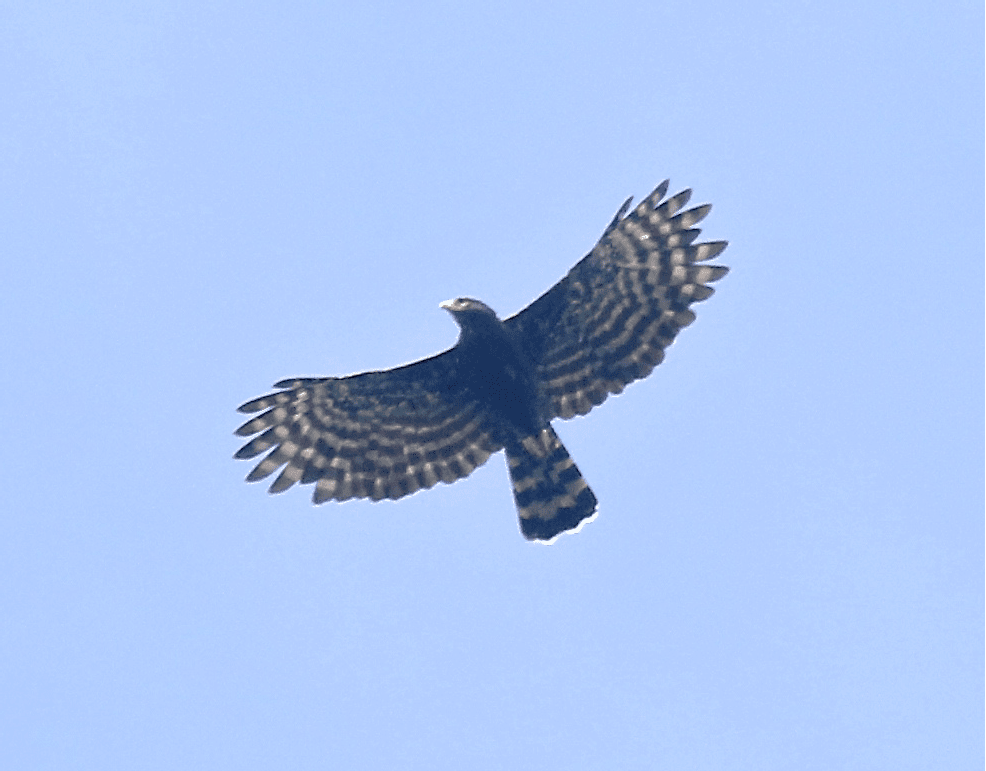
- Genus Spizaetus
- Black hawk-eagle (S. tyrannus) – Central and South America
- Ornate hawk-eagle (S. ornatus) – Central and South America
- Black-and-white hawk-eagle (S. melanoleucus) – Central and South America
- Black-and-chestnut eagle (S. isidori) – South America
- Genus Nisaetus
- Changeable hawk-eagle (N. cirrhatus) – Asia
- Flores hawk-eagle (N. floris) – Indonesia
- Sulawesi hawk-eagle (N. lanceolatus) – Indonesia
- Mountain hawk-eagle (N. nipalensis) – Asia
- Legge’s hawk-eagle (Nisaetus kelaarti) – India
- Blyth’s hawk-eagle (N. alboniger) – Malaysia, Indonesia
- Javan hawk-eagle (N. bartelsi) – Indonesia
- (Northern) Philippine hawk-eagle (N. philippensis) – Philippines
- Pinsker’s hawk-eagle (Southern Philippine hawk-eagle) (N. pinskeri) – Philippines
- Wallace’s hawk-eagle (N. nanus) – Malaysia, Indonesia
- Genus Lophaetus
- Long-crested eagle (L. occipitalis) – Africa
- Genus Stephanoaetus
- Crowned eagle (S. coronatus) – Africa
- Malagasy crowned eagle (S. mahery) – Madagascar (extinct)
- Genus Polemaetus
- Martial eagle (P. bellicosus) – Africa
- Genus Hieraaetus
- Ayres’s hawk-eagle (H. ayresii) – Africa
- Little eagle (H. morphnoides) – Australia
- Pygmy eagle (H. weiskei) – New Guinea
- Booted eagle (H. pennatus) – Eurasia, Africa
- Haast’s eagle (H. moorei) – New Zealand (extinct)
- Genus Lophotriorchis
- Rufous-bellied eagle (L. kienerii) – Asia
- Genus Aquila
- Bonelli’s eagle (A. fasciata) – Eurasia, Africa
- African hawk-eagle (A. spilogaster) – Africa
- Cassin’s hawk-eagle (A. africana) – Africa
- Golden eagle (A. chrysaetos) – North America, Eurasia
- Eastern imperial eagle (A. heliaca) – Eurasia, Africa
- Spanish imperial eagle (A. adalberti) – Europe
- Steppe eagle (A. nipalensis), Africa, Asia
- Tawny eagle (A. rapax) – Africa, Asia
- Greater spotted eagle (A. clanga) – Eurasia, Africa
- Lesser spotted eagle (A. pomarina) – Eurasia, Africa
- Indian spotted eagle (A. hastata) – Asia
- Verreaux’s eagle (A. verreauxii) – Africa
- Gurney’s eagle (A. gurneyi) – Asia, New Guinea
- Wahlberg’s eagle (A. wahlbergi) – Africa
- Wedge-tailed eagle (A. audax) – Australia and into New Guinea
- Genus Ictinaetus
- Black eagle (I. malayensis) – Asia
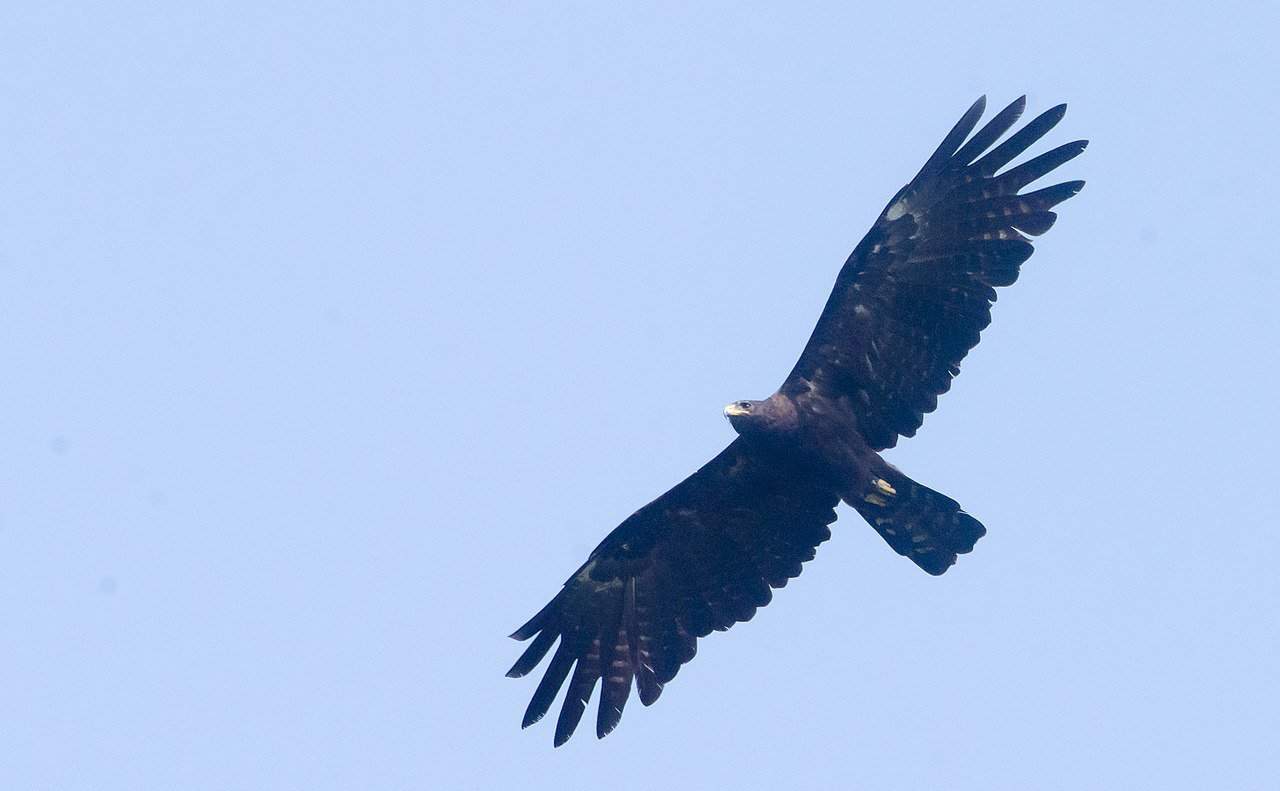
Range
Despite the United States claiming the bald eagle as their national bird, there are only two species of eagles in North America, one of which also ranges to Eurasia. The number of species in each general geographic area is:
- Australia (includes New Guinea and New Zealand): 5 species
- North America: 1 species
- North America and Eurasia: 1 species
- Central and South America: 5 species
- South America: 4 species
- Africa: 19 species
- Asia (includes the Philippines and Indonesia): 18 species
- India: 4 species
- Eurasia: 5 species
- Australia and Asia: 2 species
- Eurasia and Africa: 8 species
Eurasia and Africa have the most eagle species, with 56 occurring somewhere on those two continents. These are extensive areas with different habitat types, so it’s no surprise that’s where you find the most diversity of these large flying carnivores.
Habitat
You can find eagles in all habitats with enough food to support them: tundra, rainforest, deserts, wetlands, and everything in between. An eagle’s body shape is tuned to its environment, so forest eagles tend to have shorter and rounder wings than eagles of open environments giving them better agility in flying around branches and attacking unsuspecting prey.
Most eagles have none or only a couple of subspecies. The Crested serpent eagle is unusual, with 21 subspecies proposed. Subspecies on the mainland have larger bodies than those on islands, and northern subspecies are larger than southern ones. Many subspecies occur on the islands neighboring China, Thailand, and Malaysia and the islands of Indonesia.
Some of these subspecies may, in fact, be separate species. Even if only a subspecies, some of these live at very small population sizes, exemplified by the Bawean serpent eagle with only 26-37 pairs, making it the most endangered population in the world.
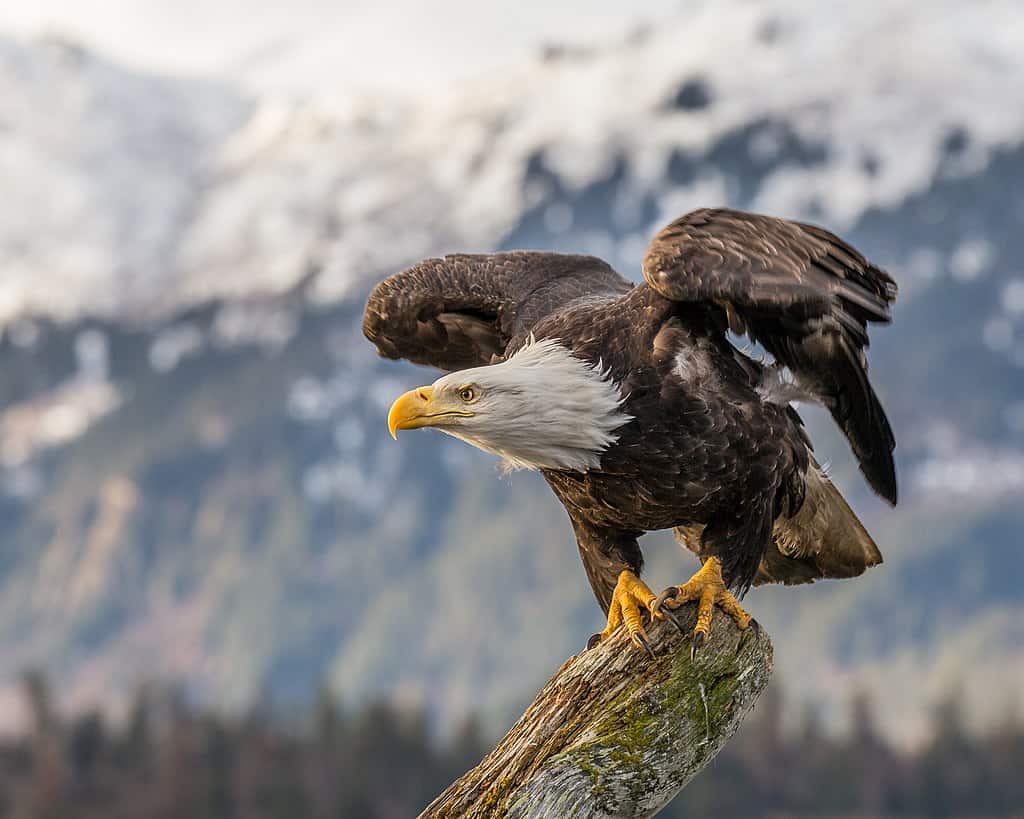
Body Size
Eagles range in size from the small South Nicobar serpent eagle at 1 lb and a body length of 40 cm to a few huge species. It’s hard to say which species in existence is the largest; if you consider wild females (females are always larger than males), the Steller’s sea eagle is likely the heaviest recorded (up to 22 lbs), with the harpy eagle (at 20 lbs) a close second. In contrast, the Philippine eagle has the longest wingspan (220 cm).
The bateleur has the most extreme body shape. If you had never heard of this eagle, no worries; neither had I. It has the shortest tail for its body size and the longest wings – the wingspan is 2.9 times the bird’s length. It lives in scrubby closed-canopy savannah and is a generalist predator, eating 160 different prey species, so there is no apparent link between ecology and body shape.
It is also perhaps the most strikingly colored of the eagles, with a bright red cere and feet and white greater coverts creating a distinctive black and white underwing pattern.
As their name suggests, booted eagles have feathered legs, while all the other eagles have bare legs. It is unclear why one group has feathered legs while the others do not.
Sounds
Eagles make a variety of calls but do not sing. Calls can sound like whistles, yodels, yelps, screams, wails, yips, barks, croaks, or screeches, even a wild human laugh or a hiccup, depending on the species. In short, they are not musical. However, the sound of the African fish eagle has been called ‘the sound of Africa,’ and there are even reports of them duetting with hippos, though this has questionable accuracy.
Diet
All eagles have large, hooked beaks and strong talons, and combined with excellent eyesight, they are all hunters, capturing live vertebrates. They typically capture and kill animals that are over a half meter long. However, within that broad category, some specialize on specific prey – fish and snakes are two typical specialties – yet there is still enormous variation in what is taken, from termites to ungulates.
Eagles typically capture their prey without landing and then fly with it to a perch or back to the next. This allows them to capture heavier prey than would be possible if they landed and had to take off again. The heaviest known prey an eagle killed without landing was a 15 lb mule deer fawn taken by a bald eagle.
Sometimes, eagles will kill prey that is too large to carry and so will consume it on site, tearing off chunks and then flying into a tree to eat them. They may continue to feed off a large kill for days. Golden and crowned eagles have killed ungulates weighing up to 66 lb, and a martial eagle killed an 82 lb duiker (an antelope) which weighed 7–8 times more than the eagle itself.
Snake eagles must kill their prey fast, as many snakes are venomous. The eagle will often crush or remove the head while flying, then partially or entirely eat them head first. Most snake eagles will also consume other reptiles and mammals, but they specialize on snakes.
Fish eagles are often kleptoparasites and choose to harass and steal prey from other species, including other birds like storks, osprey, and herons. They will also kill mammals, ducks, waterfowl, lizards, frogs, monkeys, crocodiles, and flamingoes, and eat carrion (dead animals).
Verreaux’s eagle is one of the most specialized eagles, which mainly eats two species of rock hyrax. Hyraxes are very wary, but these eagles fly fast and low, even sometimes hunting cooperatively with one eagle distracting the hyrax while the other captures it. Verreaux’s eagle has another cool behavior to its credit: it drops branches on nest predators, so it is the only raptor believed to use tools.
On the other end of the spectrum, the tawny eagle eats at least 200 species of prey. Bonelli’s eagle consumes over 130 species of birds, including small finches and sparrows, and steppe eagles can switch to consuming mainly termites during the winter. Thus, despite broad categories, many eagles are generalists when the opportunity presents itself.
Hunting
Eagles have excellent vision, the best of any group of animals, and it is 4-8 sharper than a human’s. They can spot prey 2 miles away – can you imagine being able to see a rabbit at that distance? This acuity is achieved because their muscles can adjust their eye’s curvature to maintain depth perception and focus as they search for and attack their prey.
In an area called the fovea in the enter of their eye, they also have many more cones than a human does. An eagle may have 1,000,000 cones per millimeter in their fovea, while a human has a palsy 200,000 – and an eagle has two foveae in each eye, while humans have only one.
Have you noticed that, in general, the eyes of carnivores are at the front of the face, while herbivores have eyes at the sides? Front-facing eyes give you good binocular vision – necessary for finding prey – while side-facing eyes give you good peripheral vision – good for seeing predators. Eagles have tried to do both, with eyes offset somewhat to the sides, giving them 340 degrees of sight (we see 180 degrees).
They also cannot move their eyes in their sockets, so they must turn their heads if they want to see outside that range. They move their heads continuously, mainly to use either a single eye to view distant objects or both to see close objects.
Another cool thing about eagle eyes is that they’re large compared to their body size, about the same size as a human eye, even though they’re around 1/10 our body weight.
They also have long, even wings and direct flight, unlike the more aerodynamic hawks and buzzards. Eagles are apex predators and are the largest flying carnivore. Despite their lack of teeth, you wouldn’t want to mess with one – the talons of a large species can exert a pressure of 400-500 psi (pounds per square inch) – over ten times the strength of a human. Some sources claim bald eagles can exert 1,000 psi, but it needs to be clarified if these are accurate measurements.
While snake eagles have thick skin on their legs to protect them from snake bites, fish eagles have sharp barbs (spiricules) to help hold on to slippery fish.
In the non-breeding season, some migratory eagles will gather at prime hunting grounds. Can you imagine seeing a group of up to 700 Steller’s sea eagles? Black-chested snake eagles have been seen in communal roosts numbering 200. The steppe eagle may engage in altruistic hunting behavior, where groups of dozens of unrelated individuals help each other hunt, a unique behavior.
Breeding
Most eagles mature slowly, taking 3-5 years to reach adulthood; some, like the martial eagle, may take 6-7 years before they reproduce, and bateleurs wait until age 8.
Pair bonding is the norm for eagles, and they most likely stay with the same mates year after year. Some species perform aerial displays to reinforce pair bonds, including high circling and dives while calling.
Eagles build large nests high up, usually in tall trees or on cliffs. The generic name for their nest is an eyrie. The largest known eagle nest (or nest of any bird) was built by bald eagles in Florida and measured 2.9 m wide and 6 m deep. However, Papuan eagle nests can be up to 3 m wide.
Nests are made of sticks, with larger nests made by bigger eagles, and are lined with smaller twigs or foliage. Many species reuse nests in consecutive years. Due to their low abundance (typical for top predators) and habit of nesting in high places, much of the detailed reproductive biology of individual species is still unknown.
Most species of eagle lay two eggs, but many also engage in siblicide, where the older chick kills the younger one, especially if there is a shortage of food; alternatively, the pair may stop incubating the second egg after the first successfully hatches. Some species, like the wedge-tailed eagle, lesser fish eagle, and grey-headed fish eagle, sometimes lay up to 4 eggs, which is unusual in eagles.
In contrast, snake eagles tend to lay single eggs, and some hawk eagles do as well. Some, like the harpy eagle or Papuan eagle, may only raise a chick every 2-3 years, and martial eagles may only breed every four years. Females do most of the incubation and feeding of the young, while the male brings back prey for her and their offspring.
Breeding pairs can be aggressive, and there are occasional reports of humans being chased or struck when they are too close to a nest. Other birds of prey, such as hawks and large owls, are known to do the same thing.
Crowned eagles have the most extended breeding cycle of any eagle and one of the longest of any bird, lasting 500 days; most eagles take around six months. The post-fledgling part of the crowned eagle’s cycle takes 9-11 months, with the parents feeding the young the entire time. The young have been described as ‘cowardly’ and ‘helpless,’ and so there is perhaps a very long learning period required by this species. The behavior of the young is in stark contrast to adults; the adults are one of the strongest, if not the strongest, living birds.
Lifespan
There are very few wild individuals of known age. One of the longest age records is from a martial eagle that was 31.4 years old, while smaller species may live 8-12 years.
Population Status
Many species of eagle are under threat from loss of habitat and loss of prey. Some species are still hunted for ceremonies, as meat, or because they sometimes hunt domestic animals. With an eagle’s requirements for large territories, tall structures for nesting, and large prey items, coupled with their delayed maturity and slow reproductive rates, they cannot withstand much anthropomorphic pressure on their populations.
This is why many species of eagles are in decline. Of the 72 species, 37 – over half, or 51.4% – are classified by IUCN as near threatened or threatened (vulnerable, endangered, critically endangered).
- Near Threatened: 12 species
- Vulnerable: 12 species
- Endangered: 10 species
- Critically endangered: 3 species
The Flores hawk-eagle may be the most endangered eagle alive today, with less than 100 pairs remaining. At one time, the Spanish imperial eagle was down to 30 pairs; now, there are over 300. The Madagascar serpent eagle was believed extinct in 1930 but was rediscovered decades later, and hopefully, has numbers in the hundreds, a better status than that history would suggest, leading to a classification of ‘only’ Endangered.
Symbology and Culture
Eagles’ sheer size and power made them popular in some myths and religions throughout the ages.
Zeus, the Greek god of sky and thunder, used an eagle (or took the form of an eagle) to abduct the boy Ganymede whom Zeus then granted eternal youth and immortality. Zeus also abducted Aegina when he was in the form of an eagle. The eagle was thus one of Zeus’s symbols.
In Hinduism, Garuda (the vehicle of the god Vishnu) is the king of birds and can either take the form of an eagle or have eagle wings, a beak, and legs.
Most Native American and Aboriginal tribes view eagles as strong, powerful, and brave, with eagles holding the power of the Great Spirit or having a connection to the Creator. The thunderbird, an eagle-like bird of Native American mythology, has supernatural powers, and in Aboriginal culture, the deity Brunjil is depicted as an eagle.
The eagle is considered the King of Birds and usually represents power (similarly, the lion is regarded as the King of Beasts and represents authority). Eagles are commonly used in heraldry and, in the past, were strongly associated with the Holy Roman Empire. The two-headed eagle of the Holy Roman Empire is still featured in the Flag of Albania.
The African fish eagle is the national bird and is featured on the coat of arms of Namibia, Zimbabwe, Zambia, and South Sudan, though Zimbabwe has the bateleur eagle on its flag. Thailand and Indonesia have Garuda, depicted as part eagle, as their national emblem. The Philippine eagle is the national bird of the Philippines and has been featured on stamps and currency. The steppe eagle is on the flag of Kazakhstan and is the national bird of Egypt as well.
Rather oddly for an eagle, the Congo serpent eagle can be found for sale in pet stores; it is unclear what this means for the cultural significance of this bird. At the opposite end of the spectrum, several cultures in the Eurasian Steppe, most notably the Kazakh people, hunt with golden eagles.
FAQs
Answer: In almost all cases, yes. The bateleur is an exception – there are some slight color differences between males and females. However, in virtually all species of eagles, the females are larger than the males. This is termed ‘reverse sexual size dimorphism.’
This may be due to energetic requirements – females perform most of the brooding – or prey acquisition – males do more of the hunting, and smaller birds are more acrobatic. Males are 6-35% smaller than females, depending on the species. The sexes appear to be equal in the Andaman serpent eagle.
Answer: Yes; it’s a myth that they lock and cannot be released at will. While eagles have a ratcheting mechanism in their feet so they can stay upright while perching – a trait they have in common with many species that perch while sleeping – they can release their talons whenever they want.
Answer: Haast’s eagle, once living on the south island of New Zealand and now extinct, was the largest eagle that ever existed, weighing 33 lbs (15 kgs) – the heaviest eagle today maxes out at 22 lbs.
Answer: Unfortunately, yes. Haast’s eagle primarily ate the giant flightless moa and was restricted to New Zealand; after the Maori arrived and hunted the moa to extinction around 1400, the eagles followed. The Malagasy crowned eagle, endemic to Madagascar, weighed around 7 lbs, likely ate lemurs, and similarly went extinct in the 1500s as humans hunted too much of its prey.
Conclusion
Eagles are awesome. They are so much more diverse than one would guess based on their depictions in movies, and in North America, we may be forgiven for forgetting about the world’s eagle diversity with our meager two species. Considering how big and powerful most eagles are and how important they are as top predators in most ecosystems, we still need to learn about most species’ biology and ecology.
Sadly, fully half have populations that are declining dangerously due primarily to habitat loss. Hopefully, we can still save these birds of power and majesty by protecting their habitats.
References
- Einoder L, and Richardson A. (2006). An ecomorphological study of the raptorial digital tendon locking mechanism. Ibis, 148(3):515-525.
- Grambo, RL. 1999. Eagles. Voyageur Press, 72 pages.
- Lerner HRL, and Mindell DP. (2005). Phylogeny of eagles, Old World vultures, and other Accipitridae based on nuclear and mitochondrial DNA. Molecular Phylogenetics and Evolution. 37(2):327-346.
- Rasmussen, D. T., Olson, S. L., & Simons, E. L. (1987). Fossil birds from the Oligocene Jebel Qatrani formation Fayum Province, Egypt.
- Eagle
Looking for more interesting readings? Check out:

